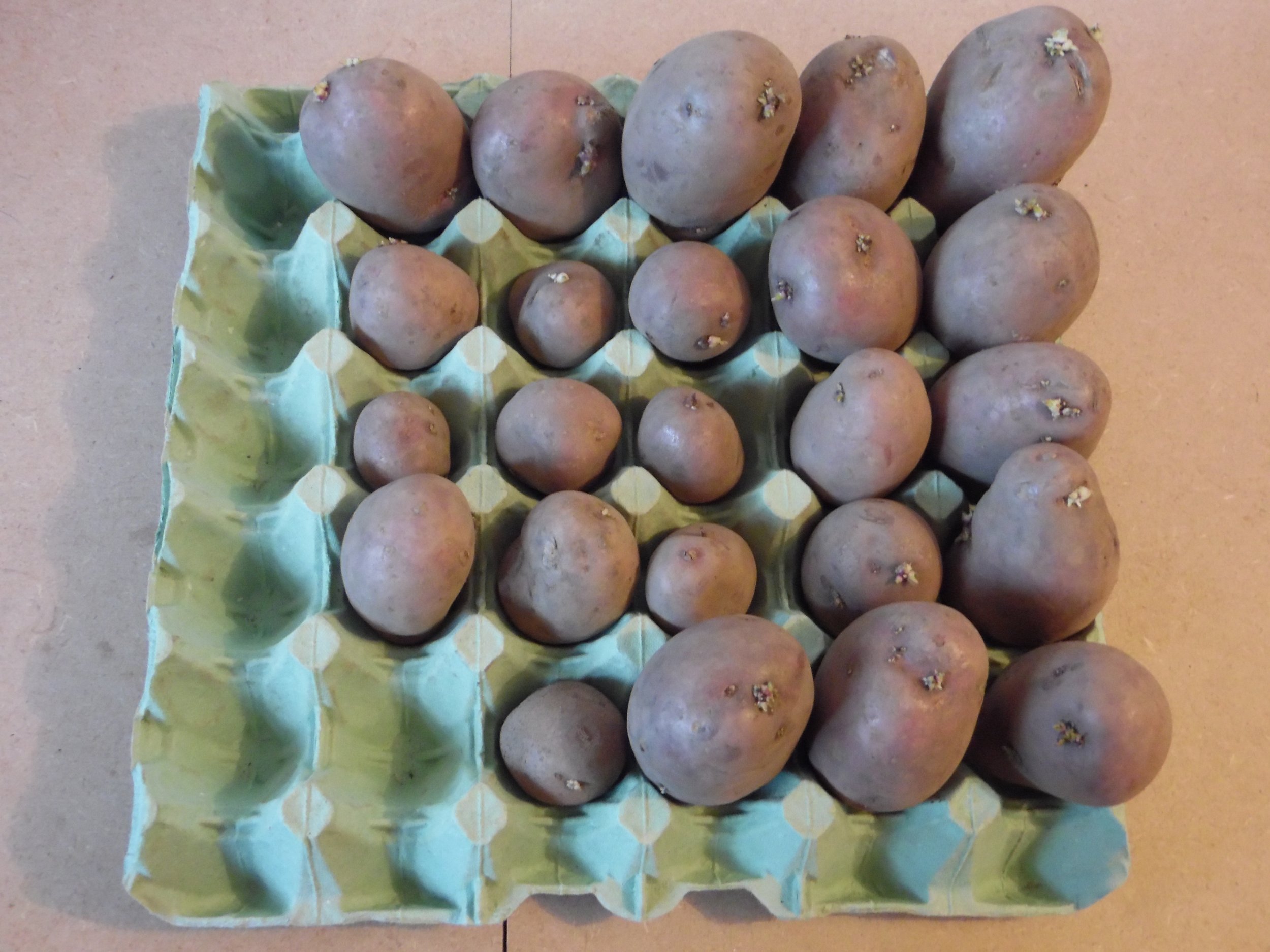One of my favourite vegetables to grow in straw has got to be potatoes. The sheer delight in breaking open a whole bale and the spuds tumbling out is magic. I will tell you my secrets for getting a bumper crop. Firstly get your bale maturing. This means getting the strawbale to start the composting process. When this process has finished the bale is good to plant or sow in. Pick what variety of potato you want. I go for one of the smaller unusual types. My personal favourite is the pink fur apple. A delicious salad potato with a delightful mottled pink skin. You are best to “chitt” your seed potatoes before planting them.
Potatoes “chitting”
This simply means getting the potato to sprout before planting. Leave them out in a cool light space. Allow them to grow a few sprouts from the specs on the potato and you are good to go. Now, you will notice on a strawbale that there are two lengths of twine running horizontally around the bale. These are fastened on by the bailing machine. This is one of the few times I advise to take them both off. As the strawbale has been “matured” it is very pliable. So make some deep holes with a dibber and start to remove the straw.
Make deep holes for the potatoes.
As deep as you can. You should be able to get at least six to eight on the top of the bale. Also put a couple along the sides which is not easy but it is possible. Put a good handful of quality compost in and if you want a few chicken manure pellets. Place the seed potato in the hole with the chits facing upwards. The straw that you took out you can now push back in. Firm down and water well. When they emerge and are getting tall earth them up by mounding compost around the stems. That is about it. A great way to grow potatoes on any surface. If you would like the full information about strawbale gardening please purchase my e-book. The Strawbale Gardeners Handbook Volume 1. It has everything you need to know. Including my own “maturing” schedule, planting and sowing, my favourite vegetables and how to grow them, different strawbale systems, what to do with “tired” bales and much more. And throughout the book there are my own “top tips”. This can be purchased here.
Happy Gardening.
Simon.
The book.





